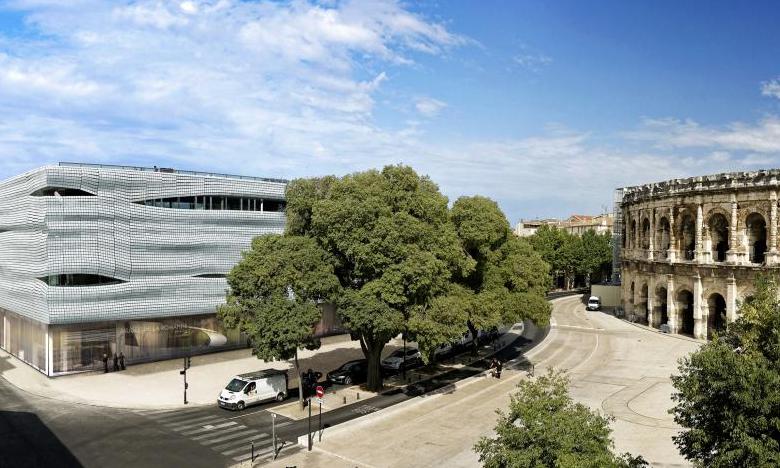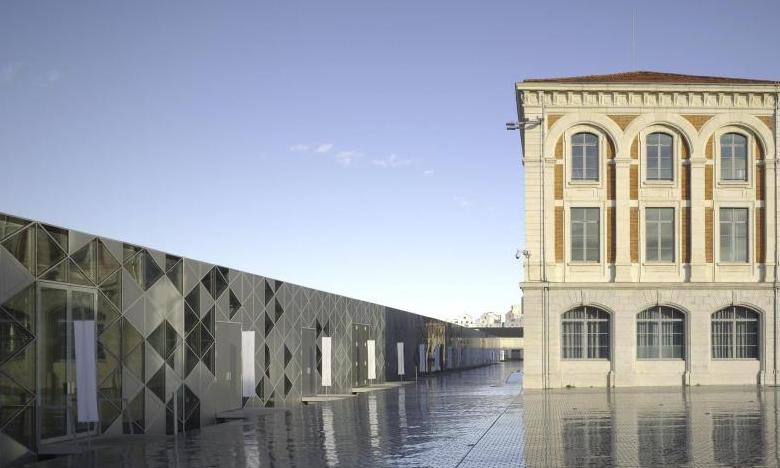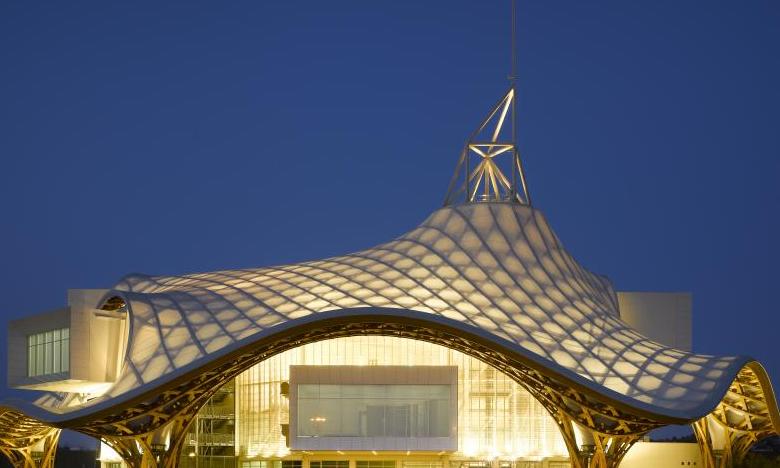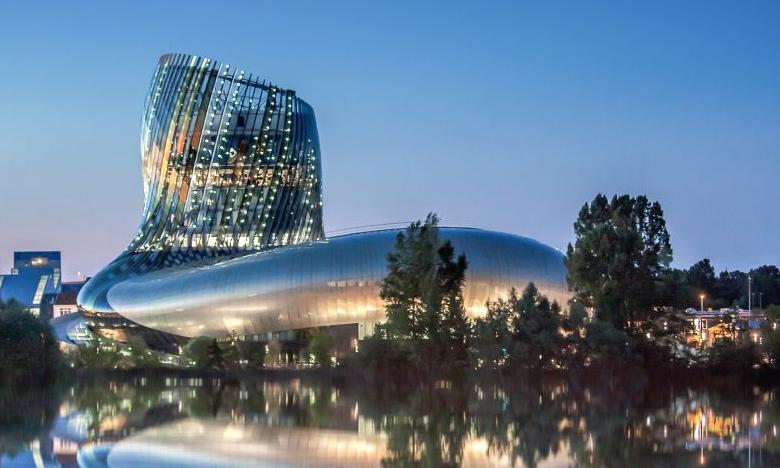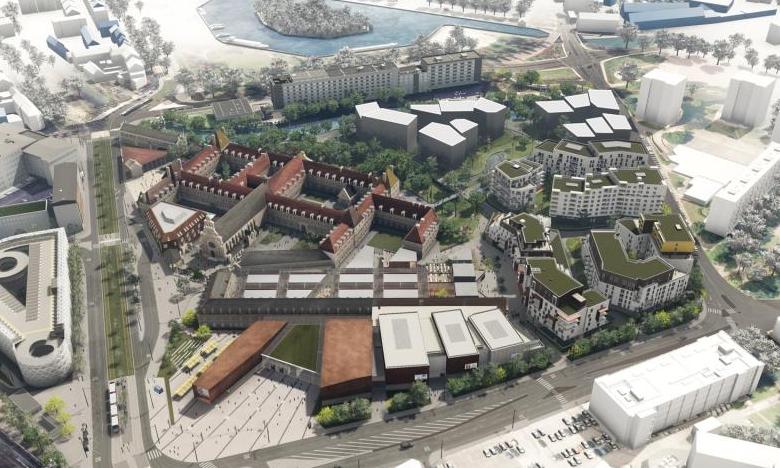For centuries, France has been fertile ground for architectural innovation. Gothic, renaissance, baroque, neoclassical, art nouveau and art deco designers have assertively put their ideas into practice and made lasting impressions on dozens of French landscapes and skylines.
The last 10 years in France have been no exception. The country has seen an explosion of modern and contemporary architectural genius from some of the world's greatest structural and landscape artists, both French and international, including Jean Nouvel, Philippe Starck, Frank Gehry, Zaha Hadid, Jakob+MacFarlane, Olivier Brochet, Rudy Ricciotti, Shigeru Ban, Jean des Gastines, Christian and Elizabeth de Portzamparc, Eric Castaldi and many more.
Particular notice is being taken of new cultural and public buildings and gardens in French regional capitals and smaller cities that are members of a French association called Top French Cities. Here is a collection of some of the best.
Angers: Located in the northern outskirts of this Loire Valley city, Terra Botanica is the first theme park in Europe devoted to plant life. Using 275,000 plant species, the 37 acres of playful, activity-filled greenhouses, fields and gardens cover six centuries of world history, botany and horticulture. Oh yeah, there are rides and attractions too! Learn more about Angers.
Bordeaux: The capital city of Aquitaine, Bordeaux has a history steeped in wine-making and seafaring. Bringing both to life are two new, neighboring and architecturally splendid museums. La Cité du Vin presents a unique immersive journey of discovery into wine cultures and civilizations. The exterior and interior of the building designed by Anouk Legendre et Nicolas Desmazières evoke wine’s liquid nature: "seamless roundness, intangible and sensual."
A few blocks away, right at the heart of Bordeaux's port, the Musée de la Mer et de la Marine, given form by Olivier Brochet, will open fully in 2019. Built of white lacquered concrete, the structures aim to embrace the fluidity and freedom associated with a sea and maritime museum. Learn more about Bordeaux.
Le Havre: As France's second largest port, Le Havre has indelible ties to the sea. No surprise then that it should endow its new quay-side École Nationale Supérieure Maritime (National Maritime School) with architecture evocative of ocean-faring vessels, including a prominent prow. Even the metallic latticework of the exterior adds to the impression of a ship on the high seas, especially when seen from afar. Learn more about Le Havre.
Marseille: Marseille is bursting with new architectural boasts. Chief among them is the Musée des Civilisations de l'Europe et de la Méditerranée (MUCEM), a landmark sea-facing venue designed by Rudy Ricciotti and devoted to the history and culture of European and Mediterranean civilizations. MUCEM has an inner structure of steel and glass but is covered in a delicate ornamental skin of filigreed concrete.
Not far away, in the port of La Joliette, Les Docks is the 5+1AA architectural firm's redevelopment of Marseille's historic dock warehouses that turned them into buzzing modern commercial, artistic and cultural spaces. Learn more about Marseille.
Metz: As the capital city of the Lorraine region, Metz lays claim to some very important architectural luster. Leading the list of modern structures is the Centre Pompidou-Metz, the sister contemporary art museum of Paris' Pompidou Center. The building's architect, Shigeru Ban, styled the large hexagonal structure with a remarkable roof inspired by a Chinese hat. Landscape architect Jean de Gastine designed the surrounding gardens.
The museum anchors a still-in-the-works Amphitheater District, which, under the direction of Nicolas Michelin, employs a power-packed architectural ensemble including Philippe Starck's first (and phantasmagoric) hotel, the Maison Heler Metz; a convention center designed by Jean-Michel Wilmotte; the Muse shopping area and other buildings by Jean-Paul Viguier et Associés; and a residential area by Christian de Portzamparc. Learn more about Metz.
Montpellier: This southern city takes particular pride in its Ecusson, a sizable historic center of medieval alleys and large plazas. Now it adds its growing modern architectural appeal. Arguably the most curious structure is Le Nuage, France's first inflatable building. No joke, although it also has a hard superstructure. Philippe Starck designed it as a center for wellbeing and health, complete with a restaurant, shops, and aquatic and ultra-modern sports centers.
In heavier counterpoise, but just as fascinating, is pierresvives, a concrete, ship-shaped building designed by the late Zaha Hadid with an equally eclectic purpose: to house a municipal center with a multimedia library, sports center, exhibition gallery and amphitheater. Learn more about Montpellier.
Nancy: Art Nouveau got its start in this city in the east of France and there are still plenty of hints to be found. But the 21st century has also taken firm root, most recently in the form of Quai Ouest. This canal-side building contains offices, a hotel and shops all wrapped in a stainless steel outer shell pierced by 650 oblong windows. The work of Anne Démians, it is also notable for its sustainability – a modern building with low energy consumption. Learn more about Nancy.
Nantes: In this northwestern city at the crossroads of Brittany and the Loire Valley, the botanical gardens play host to charming flights of fancy by children's author and illustrator Claude Ponti. These include amazing topiary art and a playground full of giant flowerpots. A fantastic place to take the kids! Learn more about Nantes.
Nîmes: Until recently, the most notable and striking monuments of the southern city of Nîmes have dated back to its rich Roman past. But that has changed. The brand new Musée de la Romanité, with interior and exterior architectural design by Elizabeth de Portzamparc, may be dedicated to Roman civilization, but looks distinctly modern. Set directly opposite the Nîmes Arena, the museum is an interplay of lines, rectangles and translucency that is at once a contrast and connection to its Roman counterpart. Learn more about Nîmes.
Saint-Etienne: Not far from Lyon in east-central France, Saint-Etienne is known for its attention to design, so much so that it was recognized as one of the globe's leading UNESCO Creative Cities of Design. This carries over to its architecture too. A recent notable new structure is the exhibition, boutique and refreshment area at the heart of the Weiss chocolate factory. The steel and glass design makes it a light, airy and welcoming showroom. Learn more about Saint-Etienne.
Strasbourg: As the administrative center of Europe and capital of Alsace, Strasbourg possesses important architectural heritage dating back to the Middle Ages. New to the mix is the Black Swan redevelopment of the Presqu’île Malraux district. A group of three black lacquered aluminum towers designed by Anne Démians includes the elegant and modern 120-room Okko Hotels Strasbourg Center. Learn more about Strasbourg.
Tours: The Centre de Création Contemporaine Olivier Debré is the newest addition to the Loire Valley's art centers. Designed by the Aires Mateus agency, reputed for timeless, refined and minimalist structures, it showcases the work of Debré, an important abstract artists. The exterior of local white stone blends well with the classical architecture of the attached fine art school, but inside, the Gallerie Noire, with walls and ceilings in black, is a striking contrast. Learn more about Tours.
About Top French Cities – www.francepresskit.com Top French Cities is an association of 29 cities, from regional capitals like Bordeaux to important towns like Avignon and Versailles. They are perfect for young travelers, families and anyone else looking for fun and authentic French experiences that will fit their budget. Most of these cities are university towns with a youthful atmosphere, but all of them reflect the heritage and distinctive flavors of the regions to which they belong. Many are forward-looking too, with historic buildings repurposed to house contemporary art and activity centers like Les Docks in Marseille. Many have created or integrated new, modern museums to contrast with their classical, architectural heritage, like in Nimes, where the cutting-edge Museum of Roman Civilization (Musée de la Romanité) is located across from the historic Roman amphitheater, or in Nantes, where whimsical mechanical creatures are being created, or in the UNESCO World Heritage Site concrete city of Le Havre.


